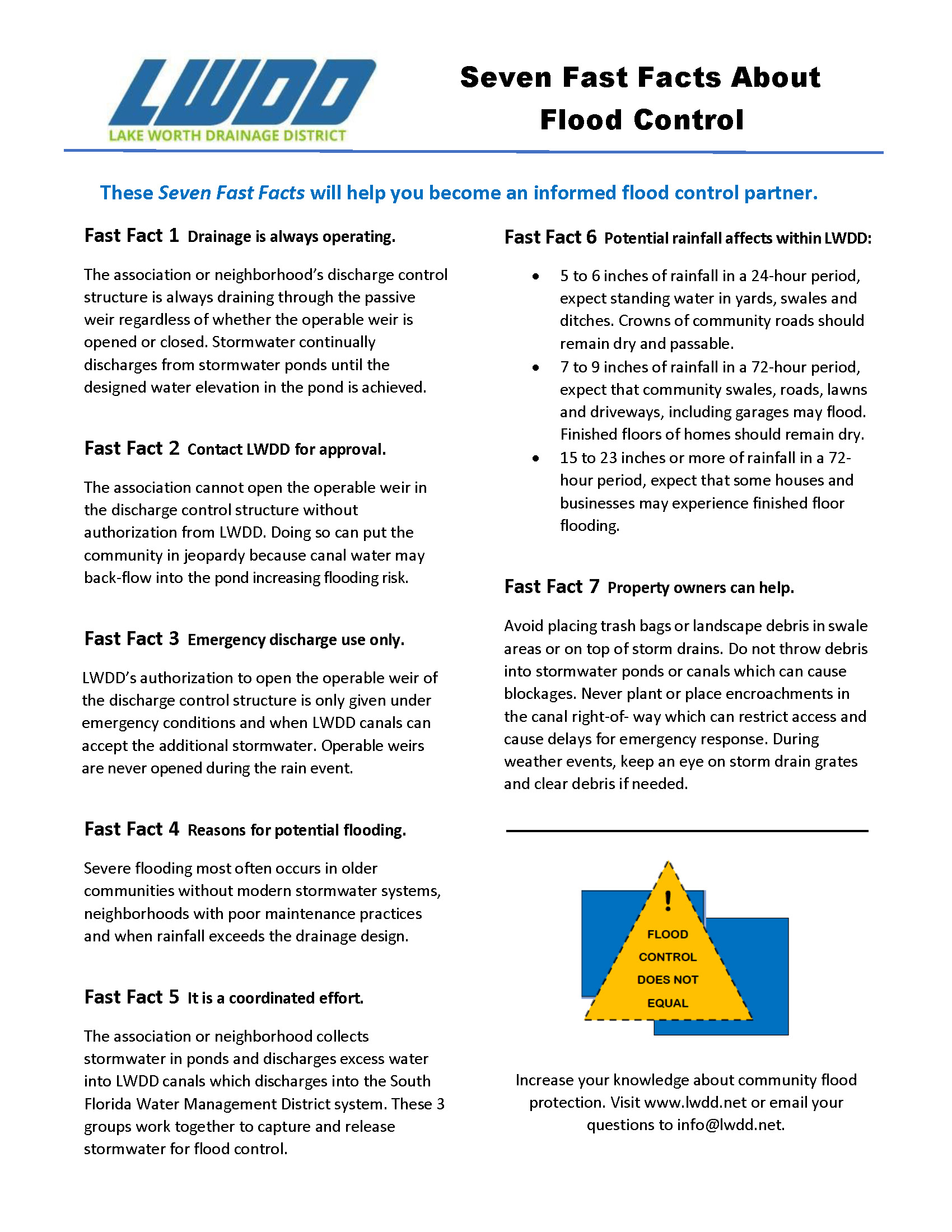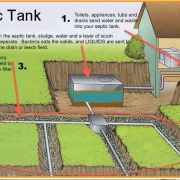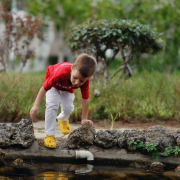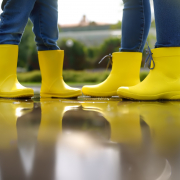Flooding And Septic Systems
/in Flood Control, News, ResidentialDuring floods or heavy rains, the soil around the septic tank and in the drain field becomes saturated, or water-logged, and the effluent from the septic tank cannot properly drain through the soil. Special care needs to be taken with your septic system during and after a flood or heavy rain.
The U.S. Environmental Protection Agency (EPA) offers these guidelines:
- Relieve pressure on the septic system by using it less or preferably not at all until floodwaters recede and the soil has drained. For your septic system to work properly, water needs to drain freely in the drain field. Under flooded conditions, water cannot drain properly and can back up into your system. Remember that in most homes all water sent down the pipes goes into the septic system. This includes shower drains and washing machines.
- Avoid digging around the septic tank and drain field while the soil is waterlogged. Don’t drive heavy vehicles or equipment over the drain field. By using heavy equipment or working under water-logged conditions, you can compact the soil in your drain field, and water won’t be able to drain properly.
- Don’t open or pump out the septic tank if the soil is still saturated. Silt and mud can get into the tank if it is opened and can end up in the drain field, reducing its drainage capability. Pumping under these conditions can cause a tank to pop out of the ground.
- How can you tell if your system is damaged? Signs include soil settling, wastewater starts backing up into household drains, the soil in the drain field remains soggy and never fully drains, a foul odor persists around the tank and drain field. If you suspect your system has been damaged, have the tank inspected and serviced by a professional.
- Keep rainwater drainage systems away from the septic drain field. As a preventive measure, make sure that water from roof gutters doesn’t drain into your septic drain field. This adds an additional source of water that the drain field must process.
- If your household relies on private well water for home consumption and your property has flooded, it is important to have your well water tested for bacteria (total coliform and E. coli) through your county health department or a private certified lab.
By taking special care with your septic system after flooding, you can contribute to the health of your household, community and environment.
Excerpt from University of Florida IFAS, Savanna Barry, Regional Specialized Extension Agent Cedar Key FL, Aug. 2023, https://blogs.ifas.ufl.edu/ncbs/2023/08/30/hurricane-idalia-resources
New Face for Public Outreach
/in News, ResidentialRosie Byrd joined Lake Worth Drainage District (LWDD) in August 2023 as a Public Information Specialist and serves as the liaison between the public and LWDD. In her new role, Rosie will communicate and engage the public and stakeholders on LWDD’s mission, responsibilities, and future goals; provide information on canal maintenance activities and water management issues; and encourage positive action regarding flood control responsibilities and hazard mitigation.
Residents can expect to find Rosie attending community and civic group meetings such as the Alliance of Delray and COBWRA. Additionally, Rosie will be monitoring and creating content for LWDD’s social media sites. Having spent most of her career at the South Florida Water Management District in a variety of roles, Rosie has a well-rounded understanding of stormwater management issues of importance to the property managers and community board members within the LWDD boundary.
Rosie’s greatest joy is spending time with her family and attending her grandkids’ school and sport activities. LWDD is excited to have Rosie as a member of our team and is confident that our residents will enjoy working with her. You can contact Rosie Byrd at rbyrd@lwdd.net or 561-819-5474.
What’s Wrong With This Picture?
/in News, Residential“It was just a quiet little slip right into the water, no splash, no screaming, no yelling, no fight. She didn’t really make a ripple because the water masked her movement. You should be able to see them, but you don’t. They just quietly go underwater. This is how kids drown with a whole bunch of people around,” stated Olaudah Parker, father of a 3-year-old who suffered a non-fatal drowning in Naples, Florida.
Children can drown sometimes in the presence of many distracted adults, like backyard poolside parties. However, more than half of fatal drownings occur when children sneak outside and reach a pool alone. But drownings can also occur in nearby canals, stormwater ponds, small koi ponds and fountains. In a state where water is everywhere, taking steps to safeguard children from drowning is critical. Constant, undistracted adult supervision, fencing/barriers, Coast Guard-approved life jackets, and technology tracking devices are good safety strategies. But safety devices and barriers only work if the environment contains them, caregivers remember to engage them, and children don’t disable or defeat them. In real life, the only water safety resource that can travel with children everywhere they go is the water safety training inside their own heads.
The American Academy of Pediatrics currently recommends swimming lessons for children as early as 1 to 4 years of age as well as all caregiver adults who have not learned to swim. Many local fire departments offer free Cardiopulmonary Resuscitation-CPR training, a vital technique needed in the event of drowning. Preventing tragedy and unthinkable heartbreak requires all caregivers to be informed and layers of protection to be installed and used. Learn more at the Drowning Prevention Coalition’s website at https://discover.pbcgov.org/drowningprevention.
Your Question Answered
/in News, ResidentialWhat is the difference between the Lake Worth Drainage District and the South Florida Water Management District?
Both the Lake Worth Drainage District (LWDD) and the South Florida Water Management District (SFWMD) provide flood control but differ in size and responsibilities. SFWMD is one of our state’s five regional water management districts and oversees the water resources in the southern half of Florida, covering 16 counties from Orlando to the Florida Keys. LWDD is a local, independent special taxing district encompassing approximately 200 square miles in southeastern Palm Beach County.
Flood control in South Florida is an integrated system consisting of primary canals operated by SFWMD, secondary canals operated and maintained by the LWDD, and tertiary neighborhood drainage systems owned, operated and maintained by residential associations. LWDD and SFWMD work closely together to provide flood control for our residents. When necessary, LWDD discharges excess stormwater into the regional flood control system or primary system operated by the SFWMD.
Website Use Disclaimer
Contact the LWDD
Lake Worth Drainage District
13081 S. Military Trail
Delray Beach, FL 33484
Phone: (561) 498-5363
Fax: (561) 495-9694
Office Hours: 8:00 a.m. to 5:00 p.m.
Monday thru Friday except Holidays.






